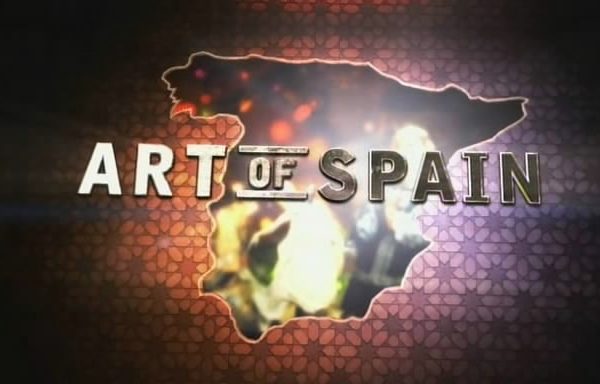Art That Made Us episode 2: An alternative history of the Black Death of the Middle Ages and its bitter – but profoundly creative – aftermath. Contemporary artists and performers, alongside historians and curators, reveal how a century of creative renewal emerged from the chaos of plague as survivors found their voice, questioning authority and challenging status and class. Above all, writing in English was revived by works including Geoffrey Chaucer’s The Canterbury Tales, William Langland’s angry satire The Vision of Piers Plowman and breakthrough works by women like the spirited pilgrim Margery Kempe.
Poet laureate Simon Armitage reflects on the poem of loss, Pearl, as a window into the medieval mind, and artist Sarah Maple shines a light on the subversive Lincoln Cathedral misericords, carved in the wake of plague. Meanwhile, writer Maria Fusco explores how the profound faith of female mystic Julian of Norwich is unshaken by illness.
As tensions rose over taxes on the plague’s survivors, the Peasants’ Revolt triggered a counter-reaction from an insecure king, Richard II. Royal photographer Chris Levine dissects the first portrait of a living English king, and artist Marc Quinn explores the beautiful but enigmatic Wilton Diptych, which Richard used to project his divine right to rule. We discover how this was also a moment of new imagination and new opportunities in cathedral-building and music as people increasingly sought their fortunes and patrons in towns and cities. Sarah Brown of the York Glaziers Trust shows us the magnificent, recently restored Great East Window at York Minster, a pinnacle of European stained glass art, and Rory McCleery and the Marian Consort perform John Dunstaple’s Veni Sancte Spiritus, a game changer for medieval music.
An epic story of creativity. How works of art from Britain’s past have shaped us. Some are surprising, others familiar – but all are at the heart of dramatic moments of change.
Art That Made Us episode 2
The Canterbury Tales
The Canterbury Tales is a collection of twenty-four stories that runs to over 17,000 lines written in Middle English by Geoffrey Chaucer between 1387 and 1400. It is widely regarded as Chaucer’s magnum opus. The tales (mostly written in verse, although some are in prose) are presented as part of a story-telling contest by a group of pilgrims as they travel together from London to Canterbury to visit the shrine of Saint Thomas Becket at Canterbury Cathedral. The prize for this contest is a free meal at the Tabard Inn at Southwark on their return.
It has been suggested that the greatest contribution of The Canterbury Tales to English literature was the popularisation of the English vernacular in mainstream literature, as opposed to French, Italian or Latin. English had, however, been used as a literary language centuries before Chaucer’s time, and several of Chaucer’s contemporaries—John Gower, William Langland, the Pearl Poet, and Julian of Norwich—also wrote major literary works in English. It is unclear to what extent Chaucer was seminal in this evolution of literary preference.
The Canterbury Tales is generally thought to have been incomplete at the end of Chaucer’s life. In the General Prologue, some 30 pilgrims are introduced. According to the Prologue, Chaucer’s intention was to write four stories from the perspective of each pilgrim, two each on the way to and from their ultimate destination, St. Thomas Becket’s shrine (making for a total of about 120 stories). Although perhaps incomplete, The Canterbury Tales is revered as one of the most important works in English literature.
Black Death – Art That Made Us episode 2
The Black Death was a bubonic plague pandemic occurring in Afro-Eurasia from 1346 to 1353. It is the most fatal pandemic recorded in human history, causing the death of 75–200 million people in Eurasia and North Africa, peaking in Europe from 1347 to 1351. Bubonic plague is caused by the bacterium Yersinia pestis spread by fleas, but it can also take a secondary form where it is spread person-to-person contact via aerosols causing septicaemic or pneumonic plagues.
The Black Death was the beginning of the second plague pandemic. The plague created religious, social and economic upheavals, with profound effects on the course of European history. The origin of the Black Death is disputed. The pandemic originated either in Central Asia or East Asia but its first definitive appearance was in Crimea in 1347. From Crimea, it was most likely carried by fleas living on the black rats that travelled on Genoese ships, spreading through the Mediterranean Basin and reaching North Africa, Western Asia, and the rest of Europe via Constantinople, Sicily, and the Italian Peninsula.
There is evidence that once it came ashore, the Black Death mainly spread person-to-person as pneumonic plague, thus explaining the quick inland spread of the epidemic, which was faster than would be expected if the primary vector was rat fleas causing bubonic plague. In 2022, it was discovered that there was a sudden surge of deaths in what is today Kyrgyzstan from the Black Death in the late 1330s; when combined with genetic evidence, this implies that the initial spread may not have been due to Mongol conquests in the 14th century, as previously speculated




